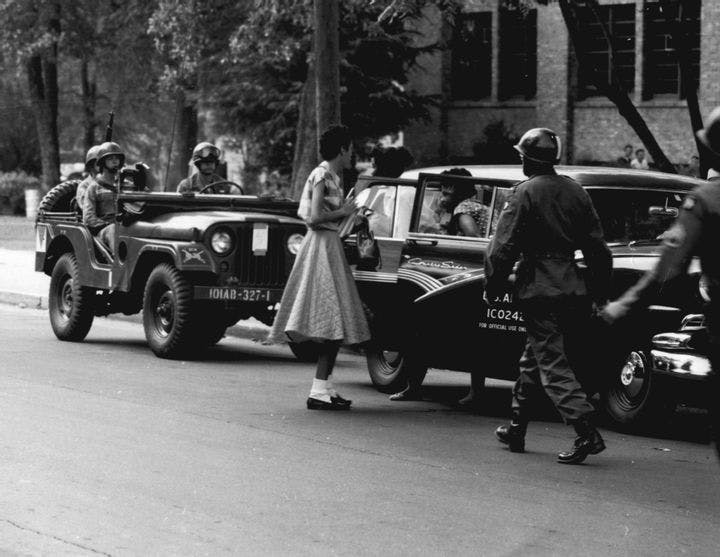Summer 2012
The Color of Friendship
– Emily Bernard
“If we’re not talking about why black people and white people don’t hang out and play Scrabble together, we’re not talking about the problem.”
In 1992, after a jury acquitted Los Angeles police officers who had viciously beaten a black motorist, the late Rodney King, black Angelenos rioted in protest. Afterward, President Bill Clinton diagnosed the country’s racial ills as the consequence of too few interracial friendships. Tanner Colby’s engrossing book begins with the same premise: “If we’re not talking about why black people and white people don’t hang out and play Scrabble together, we’re not talking about the problem.”
Colby, whose previous books were very successful biographies of “dead, fat comedians” (Chris Farley and John Belushi), might seem an unlikely author for such a book. He began the project after realizing during the 2008 presidential campaign that, despite his passionate support of Barack Obama, he “didn’t actually know any black people,” nor did most of his friends. The result, Some of My Best Friends Are Black, is a refreshingly honest and textured story that has much to contribute to conversations about race in America.
Some of My Best Friends Are Black is structured around four major arenas of everyday life: “schools, neighborhoods, the workplace, and church.” The book is not a memoir, but Colby weaves in his own stories with ease and humor. He explores the history of busing in his hometown of Birmingham, Alabama; recounts the process of desegregation in a neighborhood in Kansas City, Missouri, a place where, he says, “the segregated American cityscape came into being” through decades of redlining, blockbusting, and racial covenants; and takes on the advertising industry in New York City, where he was once a copywriter. The book ends with a profile of two Roman Catholic churches in Grand Coteau, a town deep in southern Louisiana’s “Cajun Country,” where determined parishioners managed to end a long history of segregation in worship.
Colby’s heroes, black and white, understand that interracial “brotherhood” is built on personal relationships. Those heroes range from Martin Luther King Jr. to Cas McWaters, a “conservative Southern Baptist Republican with a gravy-thick Alabama accent.” In 2005, his first year as the principal of Colby’s alma mater, Birmingham’s Vestavia Hills High School, McWaters banned the Confederate flag, the official school banner. When Colby asked him what accounted for his progressive attitudes, he said, “Just having black friends here in Vestavia, I suppose. … Close friends, people that eat over at my house, go to Sunday school together.”
Colby’s stories are peopled with “Children of the Dream,” black men and women “vested with the hopes of all their parents had fought for in the civil rights era.” He focuses on those who have thrived in white environments, most of whom attribute their success to adopting the mindset of Tycely Williams. A classmate of Colby’s at Vestavia, Williams describes herself as the “Black Girl with a Really Great Attitude,” who focused on her ambitions rather than the racial ignorance she regularly encountered. Likewise, black advertising executives Vann Graves and Geoff Edwards developed friendships with whites, relationships that ultimately enabled them to penetrate the old-boy network on Madison Avenue, which was highly segregated until the 1970s. Colby’s heroes all highlight the profitability—financially, socially, and spiritually—of both blacks and whites choosing to make intimate interracial connections.
Today, segregation in public spaces is illegal, but there is only so much the law can redress. For many whites, Colby writes, “as long as you’re not the guy dumb enough to get caught e-mailing racist jokes around the office, all you have to do is read about black people in the newspaper” and remain comfortable in homogeneous surroundings. Most of Colby’s admirable subjects are ordinary people who, like the author, grew interested in what lay beyond a complacency that many of them discovered was undergirded by conventional biases and assumptions about the “other.” Herein lies the difference between desegregation, which amounts to a numbers game, and integration, which boils down to sharing everyday experiences.
The book’s uplifting finale concerns the merging of two parishes, black and white, in Grand Coteau, famous as the site of “the Miracle of Grand Coteau,” which occurred in 1866 when a young postulant to the local convent succumbed to a grave illness and then supposedly returned from the dead. Thousands of Catholics make pilgrimages to Grand Coteau every year, but for Colby, the real miracle is the unification of the two parishes. Today, true communion between blacks and whites there can be measured in mundane social interactions such as barbecues and Sunday get-togethers.
Only a few years ago, nobody in the county believed that such scenes would ever be possible, least of all black parishioner Wallace Belson Jr., whose father was beaten merely for stepping into the white church in 1964. Thirteen successive pastors led the way to integration, but it was patient parishioners who saw the effort through to the end. As Colby establishes throughout the book, “The impossible is always waiting for anyone who wants to give it a try.” Some of My Best Friends Are Black is an invitation for both blacks and whites to let go of racial fear and indulge their curiosity.
Emily Bernard is an associate professor in the Department of English and the ALANA (African American, Latino, Asian American, and Native American) U.S. Ethnic Studies Program at the University of Vermont. She is the editor of Some of My Best Friends: Writers on Interracial Friendships (2004) and the author of Carl Van Vechten and the Harlem Renaissance: A Portrait in Black and White, published earlier this year.
Reviewed: Some of My Best Friends Are Black by Tanner Colby, Viking, 294 pp.
Photo courtesy of The U.S. Army
